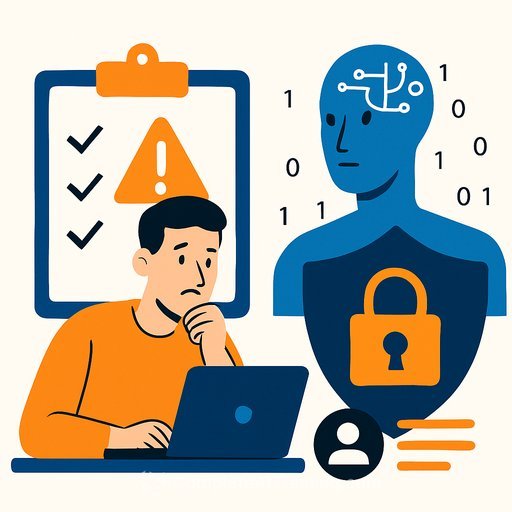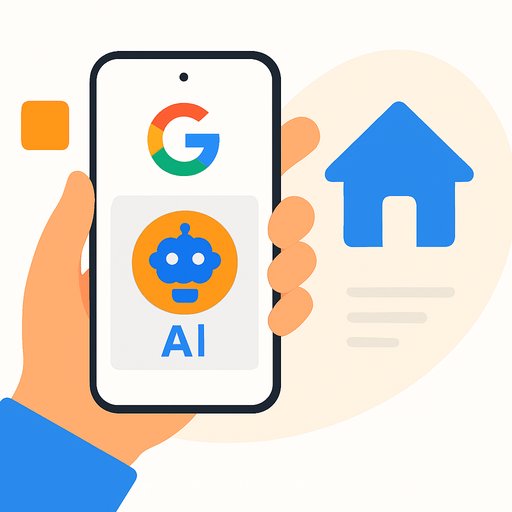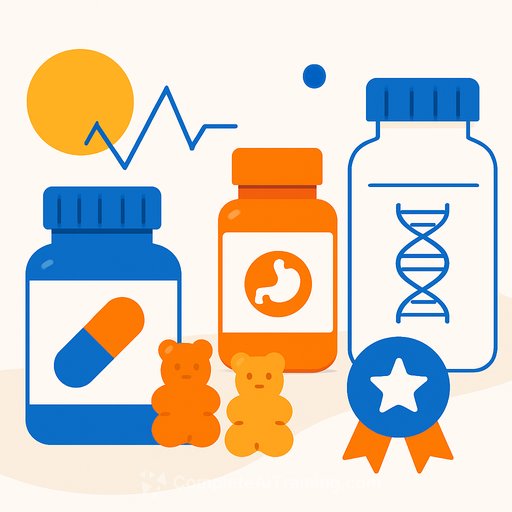The Future of AI: What Product Development Teams Need to Build Next
AI is changing how products are planned, built, and shipped. Here's a clear view of where adoption stands, where the tech is heading, and what to do about it from a product perspective.
The state of artificial intelligence today
Two AI-related Nobel Prizes in 2024, 950+ FDA-cleared AI medical devices by 2025, and 150,000 autonomous rides per week signal mainstream use. Yet CEOs report ROI in only 25% of AI projects, while 67% are shifting strategies to prioritize proven use cases. Open-source models like Llama and Mistral Large and API-first tooling are making AI integration more collaborative and accessible.
- What this means for product: Stop betting on vague "AI features." Prioritize 3-5 workflows with clear cost or revenue impact. Ship thin slices with real users, measure ROI, and iterate.
- Workforce shift: Routine tasks move to AI; roles tilt toward creative problem solving and orchestration. 54% of CEOs are hiring for AI roles that didn't exist a year ago.
What's next: Key shifts every product team should plan for
Agentic AI: From assistants to autonomous workflows
At the simple end, agents answer questions. At the advanced end, they run multistep workflows with tools and data-within guardrails. This agentic approach pairs models with tools, memory, and policies.
"An agent is kind of like a purpose-specific configuration of AI," says Alex Pilon, developer and AI advocate. "You have a system prompt tuned for a task or workflow, plus tools-databases, third-party services-and resources like a product knowledge base."
Example: a storefront agent that monitors sales patterns, updates prices based on demand, and triggers inventory orders-without a PM writing a weekly ops ticket.
- Product checklist: Define a narrow mission, allowed tools, hard guardrails, and escalation rules. Log every action. Add offline replay and human override.
- KPIs: Cycle time reduced, cost per task, error rate, human interventions per 100 runs, customer impact (NPS/retention).
Augmented content creation
AI lowers the cost of production for design, copy, and code. The new constraint is differentiation. Treat AI as a force multiplier for your team's taste and strategy, not a content factory.
- Build system, not chaos: Brand guardrails, tone presets, component libraries, and approval flows. Train on your best examples, not everything.
- Quality: Human-in-the-loop reviews, fact-check prompts, reference linking, and automated diff checks before publish.
Hyperpersonalization at scale
Customers expect individualized experiences. AI enables product experience management that adapts pricing, content, and onboarding to each user.
- Data scope: Event streams, product catalog, support history, and consented browsing signals. Keep it explainable and revocable.
- Experiments: Start with cart recovery, onboarding steps, cross-sell modules, and fine-grained search ranking. Measure lift, not clicks.
Training data could run dry
Researchers expect public data used for training to be exhausted as early as 2026. Quality gains may slow unless teams adopt new inputs like IoT signals, simulations (Sim2Real), and synthetic data.
- Product moves: Catalog your proprietary data, build safe-data pipelines, and test simulation-based training for rare or risky scenarios.
- Governance: Track provenance. Label synthetic vs. real. Audit effects on accuracy and bias.
AI will serve AI
As more people use generative systems instead of search, your go-to-market content must be legible to machines first. That means structured facts beat clever headlines.
- Structure content: Clear subheads, Q&A blocks, specs, pricing, constraints, compatibility, and comparison tables translated into text sections.
- Avoid shortcuts: Black-hat tricks (mass fake feedback, query pumping) are risky and short-lived. Invest in factual clarity and coverage of real user questions.
Machine learning will simplify internationalization
Translation and localization are getting faster and cheaper, with quality improving across languages. This removes a major barrier to shipping globally.
- Flow: Machine translate, auto-QA, human spot-check for top markets, and continuous updates tied to release branches.
- Don't skip: Legal copy review, cultural fit, date/number formats, payment and address validation per locale.
New paradigms and risk transfer
Expect policies like AI hallucination insurance and advances in architectures such as neuromorphic computing to enter planning conversations. Treat insurance as a last line of defense, not a replacement for evaluations, guardrails, and monitoring.
Artificial general intelligence
Timelines are debated-from the next few years to decades. If AGI arrives, expect deeper personalization, support, and supply chain orchestration-alongside new ethical and technical questions.
- Prepare with scenarios: Run quarterly "what-if" drills on governance, model autonomy, and fail-safes. Keep a lightweight playbook for step-down modes if systems misbehave.
Risks product leaders must manage
Energy consumption and climate
Data center capacity under construction doubled from 2022 to 2023, adding about 12,000 megawatts-more than what most countries use in total. Inference also consumes water (roughly a small bottle per 10-50 responses) and adds emissions.
- Mitigations: Prefer efficient models, quantization, on-device or edge inference where feasible, prompt caching, batch processing, and providers with renewable commitments. Track a "cost per insight" KPI.
Privacy
Training and inference often touch personal data. Facial recognition, behavior analysis, and prediction raise serious questions.
- Mitigations: Consent-first design, data minimization, retention limits, redaction, and access controls. Consider on-device inference for sensitive flows.
- OECD AI principles can guide policy and product decisions.
Job disruption
Entry-level work is thinning as routine tasks shift to AI. Recent grads face higher unemployment, amplified by tech layoffs and macro pressure.
- Team design: Pair humans with AI co-workers. Create apprentice tracks focused on judgment, research, and customer insight. Make career ladders reflect AI-assisted delivery.
Misinformation
Models hallucinate and deepfakes are surging. Between 2019 and 2023, deepfakes grew by 550%.
- Controls: Fact-check prompts, source citation requirements, retrieval augmentation, red-team tests, and content signatures. Consider content authenticity standards for public outputs.
A practical 30-60-90 plan for product leads
- Days 0-30: Pick 3 workflows with clear ROI. Set baseline metrics. Ship a pilot with a small model, strict guardrails, and human review.
- Days 31-60: Add monitoring, evals, and cost dashboards. Expand to one agentic workflow. Stand up a content QA pipeline.
- Days 61-90: Roll out personalization in one funnel stage. Localize one market. Formalize privacy and energy KPIs. Document a rollback plan.
If you're skilling up your org, see role-specific learning paths and fresh launches here: AI courses by job and latest AI courses.
FAQ
How advanced will AI be in 2050?
No one can forecast precisely. Many experts expect systems to handle most routine cognitive tasks and sit inside daily life and work.
What is the future of artificial general intelligence?
AGI-systems that can learn and apply knowledge across domains like humans-has uncertain timing. Estimates range from the next decade to several decades, with some claiming sooner. Treat it as scenario planning, not a dated milestone.
Which jobs will AI replace?
Roles grounded in repeatable, predictable tasks (data entry, basic analysis, simple content production) are most exposed. Roles centered on creativity, judgment, and complex problem solving will shift, not vanish.
What are the next developments in AI going to be?
Expect more autonomous agents that run multistep tasks, advances in robotics, more efficient models, and better language understanding with stronger context handling. For workforce implications, see the World Economic Forum's analysis here.
Your membership also unlocks:






